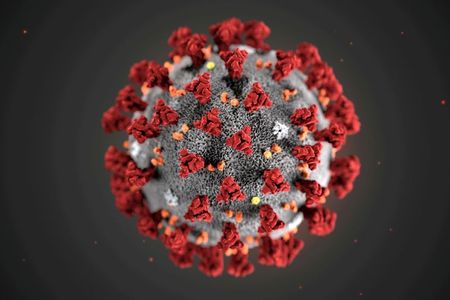(Reuters) – Here’s what you need to know about the coronavirus right now:
Trump’s about-turn
Americans are still digesting the sharp about-turn by President Donald Trump who on Sunday extended his stay-at-home guidelines until the April 30 and dropped a much criticized plan to get the economy up and running by the middle of next month. It is a measure of how things have evolved that Trump now describes an outcome of between 100,000 and 200,000 deaths in the United States as evidence of a “very good job” done in containing the fallout.
The u-turn by Trump came as the U.S. death toll topped 2,460, according to a Reuters tally, with more than 141,000 cases, the most of any country in the world.
Trump said more details would be disclosed on Tuesday.
Shelter from the financial storm
The numbers have been staggering: $15 trillion wiped off stock markets, airlines have had half their value vaporized and cratering economies risk a new wave of government debt crises.
So where are the places to park your money?
Sit-on-your-sofa-suited stocks like Netflix and Amazon have risen and some specialized medical equipment companies have surged. Ultra-safe U.S. government bonds too appear a safe harbor, returning 13% as the Fed cut U.S. interest rates to effectively zero.
“Our expectation is for a very volatile second quarter,” Stephane Monier, chief investment officer of Lombard Odier, said. “It is important to keep in liquid, high-quality assets.”
The spread
There are over 720,000 confirmed cases of coronavirus worldwide, with more than 57,000 cases added in the last 24 hours across 202 countries and territories.
The United States reported over 18,000 new cases in the past day, roughly a third of all new cases. North America now accounts for 20% of all cases, and Europe 53%, though fatality rates in the latter are much higher than in the United States.
There were 3,208 deaths reported in the last day, bringing the total number of fatalities to 34,000.
The global average fatality rate of the disease remains high at around 4.7%, though that figure is expected to drop as testing widens. Countries with unusually high fatality rates include Italy, where around 11% of reported cases have been fatal, and Spain, where 8% of cases have been fatal.
China continues to report low numbers of new cases, with just 31 new infections on Sunday and only one locally contracted case. The country closed its borders to foreign passport holders on Saturday.
Globally, over 145,000 cases have been reportedly cured, around 20%. The recovery rate has reached 92.5% in China where the virus peaked over a month ago.
(To see an interactive graphic tracking the global spread of coronavirus: open https://tmsnrt.rs/3aIRuz7 in an external browser.)
Acceptable distance = length of hockey stick, sturgeon or big llama.
Two meters (6 feet, 6 inches) of separation is seen as critical to preventing transmission of the coronavirus, but with few people carrying tape measures, rules of thumb have become important.
The City of Toronto posted signs in parks last week urging residents to stay one hockey stick apart.
In nature-loving Oregon, standing back about “one mature white sturgeon” should do the trick, the U.S. state’s fish and wildlife department wrote on Twitter, while the City of Calgary, Alberta, suggested a “big llama.”
Even a large llama’s length may not work, though. A study from the Massachusetts Institute of Technology concluded coughs and sneezes can generate clouds of viral droplets of seven to eight meters.
That’s roughly four hockey sticks.
(Compiled by Karishma Singh and Mark John, editing by Pritha Sarkar)


